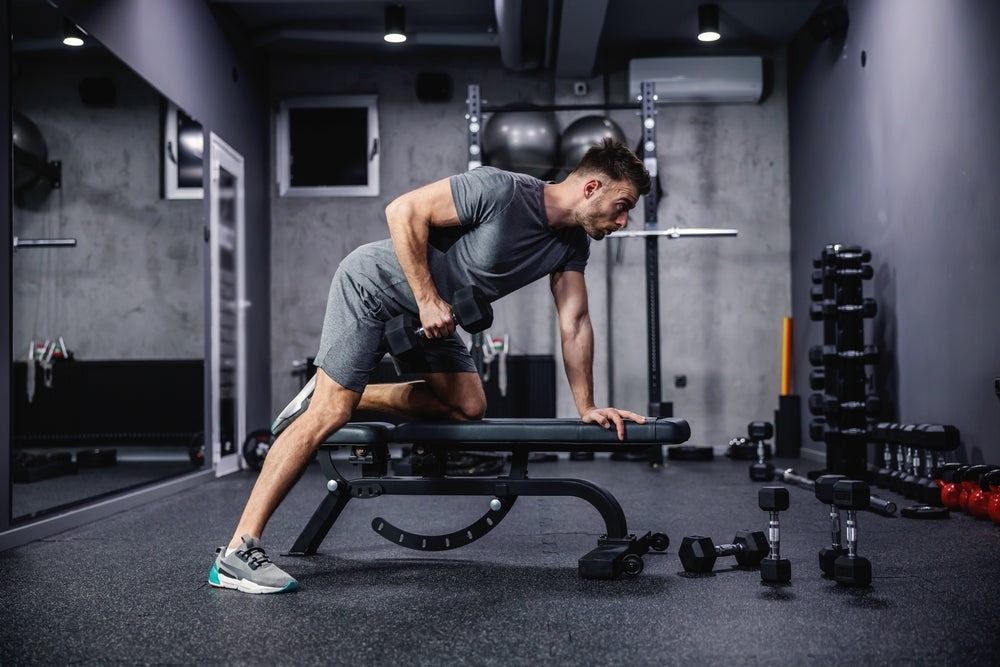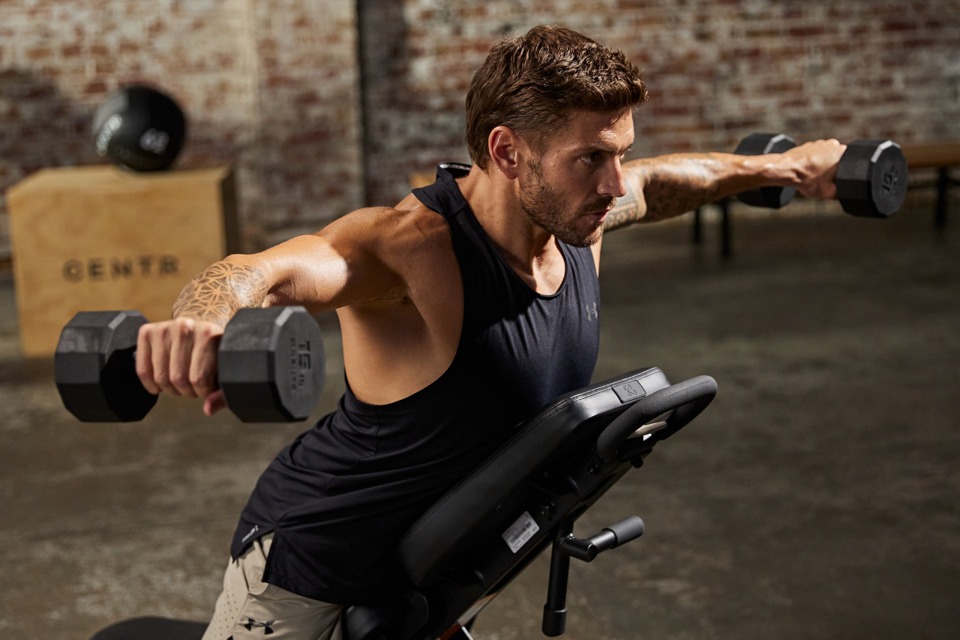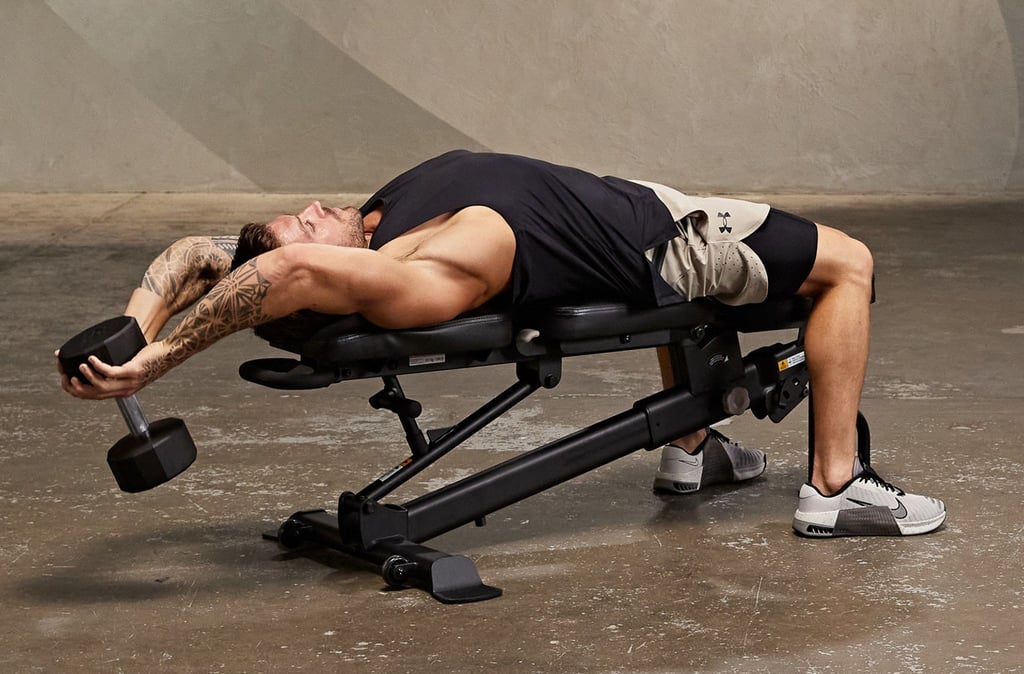Build a Stronger Back with Dumbbells
Sculpt a powerful back using just dumbbells—no machines required. This guide covers top exercises, proper form, and tips to boost strength, posture, and gains right from your home gym.


Build a Stronger Back with Dumbbells
The back muscles play a crucial role in our daily activities. They help with posture, support the spine, and assist in movements like lifting and pulling. Strengthening these muscles can prevent injuries and reduce back pain, making it essential to incorporate back workouts into your routine.
Importance of a Strong Back
A strong back is foundational to overall physical health. It supports the upper body and plays a significant role in maintaining balance and stability during various activities. Without a strong back, even simple tasks like sitting or standing can become challenging over time. Moreover, a robust back helps distribute weight and stress evenly across the body, reducing the likelihood of overuse injuries.
Preventing Back Pain
Back pain is one of the most common physical complaints worldwide and can lead to decreased productivity and quality of life. Regular back workouts strengthen the muscles that support the spine, making it less susceptible to injury and pain. By incorporating targeted exercises, you can alleviate existing discomfort and prevent future issues, leading to a more comfortable and active lifestyle.
Enhancing Athletic Performance
For athletes, a strong back is critical for peak performance. Whether you're running, swimming, or lifting weights, your back muscles are engaged in almost every movement. A well-conditioned back can improve your speed, agility, and strength, giving you a competitive edge. It also helps maintain proper form during athletic activities, reducing the risk of injury.


Getting Started with Dumbbells
Before diving into the exercises, it's essential to choose the right dumbbell weight. Start with a weight that challenges you but allows you to maintain proper form. As you get stronger, gradually increase the weight to continue making progress.
Choosing the Right Dumbbell Weight
Selecting the appropriate dumbbell weight is crucial for effective workouts. Beginners should start with lighter weights to master form and technique. As you become more comfortable, you can increase the weight to keep challenging your muscles. It’s important to strike a balance; the weight should be heavy enough to fatigue your muscles by the last few reps but not so heavy that it compromises your form.
Setting Up Your Space
Creating a conducive workout environment at home is essential for a successful routine. Ensure you have enough space to move freely without obstacles. A clear area allows for a full range of motion during exercises and reduces the risk of injury. Consider using a yoga mat for added comfort and grip, especially for exercises that require you to lie down or kneel.
Safety Tips
Warm Up Thoroughly: Before starting your workout, engage in a 5-10 minute warm-up session. This can include light cardio like jogging in place or dynamic stretches. Warming up increases blood flow to your muscles and prepares your joints for the exercises ahead.
Maintain a Neutral Spine: Keeping your spine neutral during exercises is key to preventing strain. This means maintaining the natural curve of your spine without over-arching or rounding your back. Visualize a straight line from your head to your tailbone to help maintain proper alignment.
Controlled Movements: Avoid jerky or rushed movements during your workout. Focus on slow, controlled motions to engage the correct muscles and minimize the risk of injury. Taking your time with each rep allows you to concentrate on form and muscle engagement.


Top Back Exercises with Dumbbells
1. Bent-Over Row
A staple in any back workout, the bent-over row targets the upper and middle back muscles.
How to do it
Stand with your feet shoulder-width apart, holding a dumbbell in each hand. Bend at the hips, keeping your back straight. Pull the dumbbells towards your waist, squeezing your shoulder blades together. Lower the weights slowly and repeat.
Benefits of Bent-Over Row
This exercise helps build thickness in the upper back, which can improve posture and reduce slouching. Additionally, it strengthens the muscles that stabilize the shoulder blades, contributing to better shoulder health.
Common Mistakes to Avoid
Avoid rounding your back as you bend over; maintain a straight line from your head to your hips. Also, ensure that you're pulling with your back and not your arms to maximize the exercise's effectiveness.
2. Dumbbell Deadlift
This exercise works the lower back, hamstrings, and glutes.
How to do it
Stand with feet hip-width apart, holding dumbbells in front of your thighs. Hinge at your hips, lowering the dumbbells towards the floor while keeping your back straight. Return to standing by thrusting your hips forward.
Benefits of Dumbbell Deadlift
The deadlift is a compound exercise that engages multiple muscle groups, promoting strength and muscle growth. It also improves functional strength, which is useful in everyday activities like lifting heavy objects safely.
Common Mistakes to Avoid
Many people tend to round their backs or lock their knees during the movement, which can lead to injury. Focus on keeping your back straight and bending at the hips rather than the waist.
3. One-Arm Dumbbell Row
Focusing on one side at a time helps improve balance and correct muscle imbalances.
How to do it
Place one knee and hand on a bench for support, holding a dumbbell in the opposite hand. Keep your back parallel to the ground and pull the dumbbell towards your hip. Lower it back down and repeat for the other side.
Benefits of One-Arm Dumbbell Row
This unilateral exercise can help address and correct muscle imbalances between the left and right sides of your body. It also enhances core stability as you engage your abs to maintain balance.
Common Mistakes to Avoid
Avoid twisting your torso as you lift the dumbbell; the movement should be isolated to your arm and shoulder. Additionally, ensure your back remains flat throughout the exercise.
4. Dumbbell Pull-Over
This versatile exercise targets the upper back and the chest.
How to do it
Lie on a bench with your head and upper back supported, feet flat on the ground. Hold a dumbbell with both hands above your chest. Lower the dumbbell behind your head while keeping your arms slightly bent. Pull it back to the starting position.
Benefits of Dumbbell Pull-Over
The pull-over not only targets the back but also engages the chest and core, making it a comprehensive upper body exercise. It also improves flexibility in the shoulders and chest.
Common Mistakes to Avoid
Ensure that your arms are slightly bent to protect your elbows from strain. Also, avoid arching your back excessively as you lower the dumbbell behind your head.
5. Renegade Row
The renegade row is a full-body exercise that strengthens the back while engaging the core.
How to do it
Start in a plank position with a dumbbell in each hand. Row one dumbbell towards your waist, stabilizing your body with the opposite arm. Alternate sides while maintaining a strong plank.
Benefits of Renegade Row
This exercise not only targets the back but also strengthens the core and improves balance and stability. It's a great way to incorporate core training into your back workout routine.
Common Mistakes to Avoid
Avoid letting your hips sag or rotate as you row the dumbbell. Keep your body as stable as possible to engage the core effectively.


Lower Back Focused Workouts
6. Superman
This bodyweight exercise complements dumbbell workouts by targeting the lower back.
How to do it
Lie face down on the floor with arms extended in front of you. Lift your arms, chest, and legs off the ground simultaneously, squeezing your lower back. Hold for a few seconds and return to the start.
Benefits of Superman
The Superman exercise is excellent for strengthening the lower back and improving spinal stability. It also engages the glutes and shoulders, contributing to overall back strength.
Common Mistakes to Avoid
Avoid lifting your head too high, which can strain the neck. Focus on lifting with your chest and legs while keeping your neck in a neutral position.
7. Dumbbell Good Morning
A great exercise to target the lower back and improve flexibility.
How to do it
Stand with feet shoulder-width apart, holding a dumbbell in each hand at your shoulders. Bend at the hips, lowering your torso while keeping your back straight. Return to standing by engaging your lower back and glutes.
Benefits of Dumbbell Good Morning
This exercise enhances flexibility in the hamstrings and strengthens the entire posterior chain, including the lower back and glutes. It's an effective way to prepare your body for more advanced movements.
Common Mistakes to Avoid
Ensure that your back remains straight throughout the movement to avoid unnecessary strain. Also, keep the movement controlled and avoid bouncing at the bottom of the motion.


Creating a Dumbbell Back Workout Routine
To get the most out of your back workouts, consider structuring your routine with a mix of exercises targeting different areas of the back. Here's a sample routine:
Warm-up: 5-10 minutes of light cardio or dynamic stretching
Bent-Over Row: 3 sets of 10-12 reps
Dumbbell Deadlift: 3 sets of 10-12 reps
One-Arm Dumbbell Row: 3 sets of 10 reps per arm
Dumbbell Pull-Over: 3 sets of 10-12 reps
Renegade Row: 3 sets of 8-10 reps per side
Superman: 3 sets of 12-15 reps
Cool down: Stretching focusing on the back and hamstrings
Tips for Success
Consistency is Key
Aim to perform this routine 2-3 times per week for optimal results. Regular practice will help you build strength progressively and improve your technique over time. Consistency also aids in developing muscle memory, making each session more effective.
Progressive Overload
Gradually increase the weight or the number of repetitions to keep challenging your muscles. This principle, known as progressive overload, is crucial for muscle growth and strength gains. Pay attention to your body's signals and adjust the difficulty as needed.
Listen to Your Body
If you experience any pain or discomfort, stop the exercise and consult a fitness professional. Pushing through pain can lead to injuries, so it's important to differentiate between the discomfort of a challenging workout and harmful pain.
Printable Dumbbell Back Exercises
For those who prefer a physical copy to follow along, consider creating a printable version of this routine. Having a guide on hand can serve as a helpful reminder of proper form and exercise order.
Benefits of a Printable Guide
A printable guide can be a convenient reference during workouts, allowing you to focus on form and execution without constantly checking a screen. It can also serve as a motivational tool, helping you track progress and stay committed to your fitness goals.
How to Create Your Printable Guide
Use simple design tools or templates to create a visually appealing and easy-to-read guide. Include images or diagrams to illustrate proper form for each exercise, and highlight key tips and safety reminders.
Keeping Track of Your Progress
Use the printable guide to log your workouts, noting weights used, reps completed, and any comments about how you felt during the session. Tracking your progress can provide insights into your improvements and areas needing more focus.
Conclusion
Building a stronger back with dumbbells is achievable for anyone willing to invest the time and effort. By incorporating these exercises into your routine, you'll not only improve your back strength but also enhance your posture and overall health. Remember, consistency and proper form are crucial, so stay dedicated and enjoy the benefits of a stronger back.
Embrace the Journey
Fitness is a journey, not a destination. Embrace the process and celebrate small victories along the way. Over time, you'll notice improvements in your strength, posture, and overall well-being, motivating you to continue your fitness journey.
Long-term Health Benefits
Beyond aesthetics and immediate strength gains, a strong back contributes to long-term health. It supports a healthy, active lifestyle and reduces the risk of chronic pain and injuries. By prioritizing back workouts, you're investing in a healthier future.
Stay Motivated
Keeping motivation high is key to sustaining a fitness routine. Set realistic goals, track your progress, and don't hesitate to seek support from friends or fitness communities. Remember, every workout is a step toward a stronger, healthier you.
